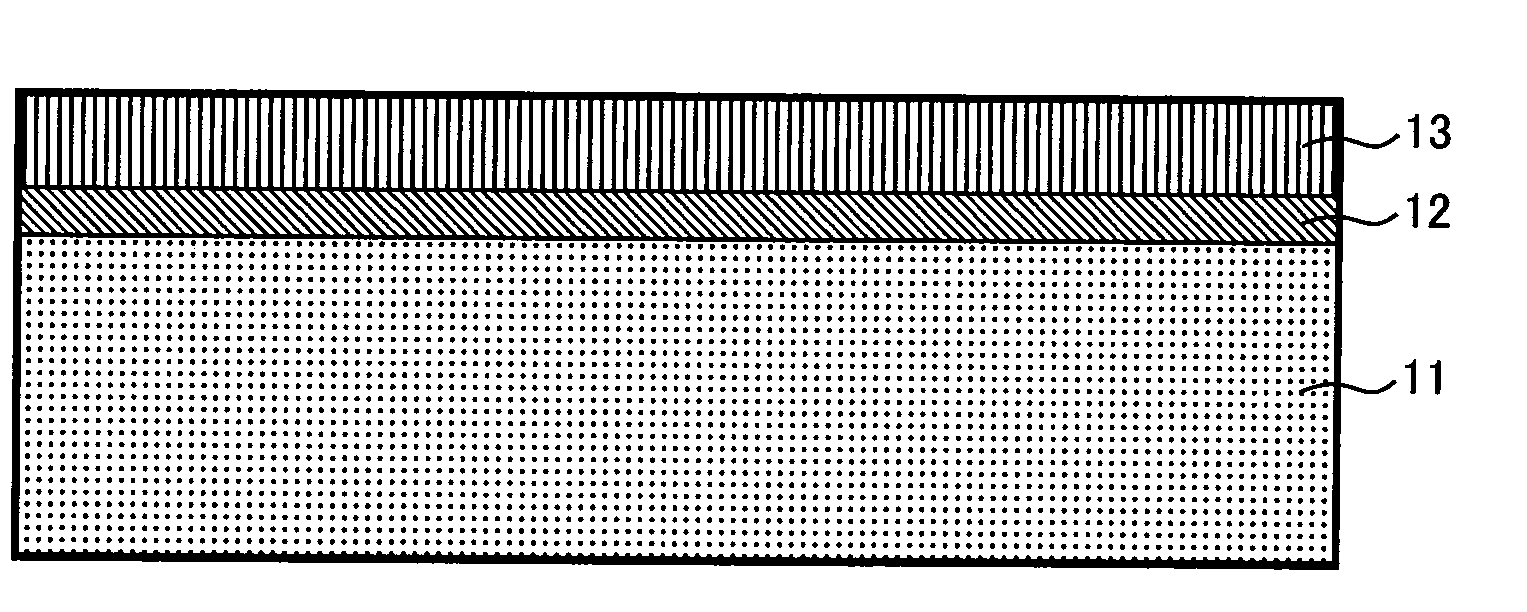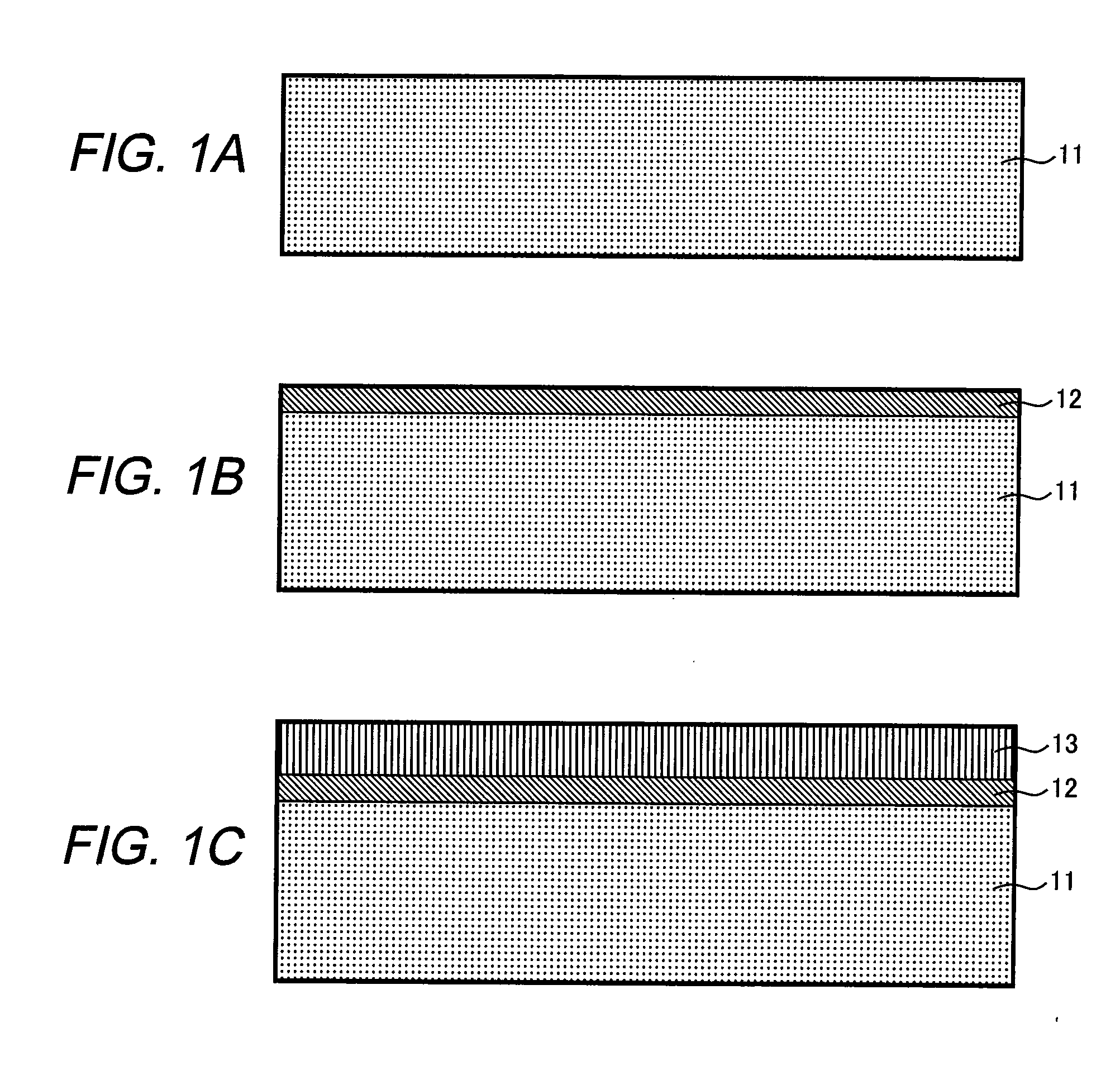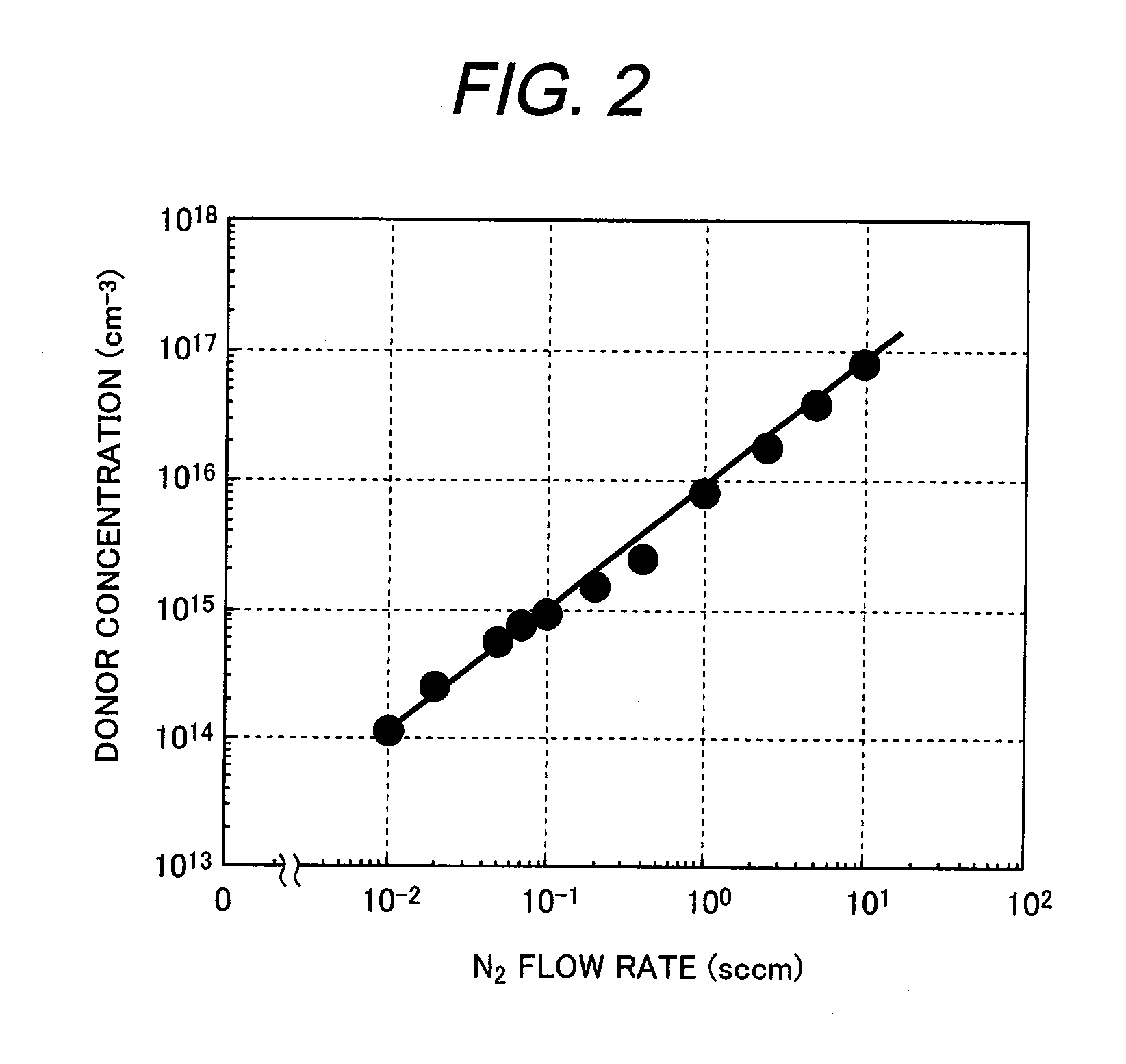Silicon carbide semiconductor substrate and silicon carbide semiconductor device by using thereof
a silicon carbide semiconductor and semiconductor substrate technology, applied in the direction of semiconductor devices, basic electric elements, electrical apparatus, etc., can solve the problems of inability to determine the donor concentration in the epitaxial layer adopted as the drift layer, the method is not suitable for forming an epitaxial layer, and the determination of the dislocation density cannot be achieved by mere reasoning only for reducing the dislocation density, etc., to achieve significant reduction enhancing conversion efficiency, and reducing the effect of basal plane dislocation density
- Summary
- Abstract
- Description
- Claims
- Application Information
AI Technical Summary
Benefits of technology
Problems solved by technology
Method used
Image
Examples
first embodiment
[0048]The basic mode of the present invention that includes a silicon carbide semiconductor substrate having a semiconductor layer of a low basal-plane dislocation density above a base substrate formed of a silicon carbide semiconductor single crystal is used as a first embodiment of the invention to study growth conditions for obtaining a low-donor-concentration silicon carbide epitaxial layer to be used as a dislocation conversion layer.
[0049]First, the base substrate formed of a silicon carbide single-crystal wafer is prepared for use. The silicon carbide single-crystal wafer is 4H—SiC with a 50-mm diameter n-type (0001) plane inclined by 8 degrees in a direction of [11-20]. The growth uses the Si-plane side of the wafer provided with chemical-mechanical polishing (CMP) after being mechanically polished into a mirror-like surface. This silicon carbide single-crystal wafer has a donor concentration of 3×1018 cm−3.
[0050]After being RCA-cleaned, the base substrate is set up in a sus...
second embodiment
[0057]A method of manufacturing a silicon carbide semiconductor substrate usable for forming a semiconductor device will be described as a second embodiment of the present invention. The description is based on knowledge that was obtained from the foregoing fundamental experiments. FIGS. 1A to 1C are sectional views that show manufacturing process steps relating to the silicon carbide semiconductor substrate according to the present embodiment.
[0058]First, in the step shown in FIG. 1A, a base substrate 11 formed of a silicon carbide single-crystal wafer is prepared for use. The silicon carbide single-crystal wafer is 4H—SiC with a 50-mm diameter n-type (0001) plane inclined by 8 degrees in the direction of [11-20]. Growth of epitaxial layers uses the silicon-plane side of the wafer provided with a CMP process after being mechanically polished into a mirror-like surface. This silicon carbide single-crystal wafer has a donor concentration of ×1018 cm−3.
[0059]Next, in the step shown in...
third embodiment
[0074]A method of manufacturing a silicon carbide semiconductor substrate usable for forming a device and different from the semiconductor substrate of the second embodiment will be described as a third embodiment of the present invention. The description is based on the knowledge that was obtained in the first embodiment.
[0075]FIGS. 5A to 5D are sectional views that show manufacturing process steps relating to the silicon carbide semiconductor substrate according to the present embodiment.
[0076]First, in the step shown in FIG. 5A, a base substrate 51 formed of a silicon carbide single-crystal wafer is prepared for use. The silicon carbide single-crystal wafer is 4H—SiC with a 50-mm diameter n-type (0001) plane inclined by 8 degrees in the direction of [11-20]. Growth of epitaxial layers uses the silicon-plane side of the wafer provided with a CMP process after being mechanically polished into a mirror-like surface. This silicon carbide single-crystal wafer has a donor concentration...
PUM
| Property | Measurement | Unit |
|---|---|---|
| inclination angle | aaaaa | aaaaa |
| inclination angle | aaaaa | aaaaa |
| thickness | aaaaa | aaaaa |
Abstract
Description
Claims
Application Information
 Login to View More
Login to View More - R&D
- Intellectual Property
- Life Sciences
- Materials
- Tech Scout
- Unparalleled Data Quality
- Higher Quality Content
- 60% Fewer Hallucinations
Browse by: Latest US Patents, China's latest patents, Technical Efficacy Thesaurus, Application Domain, Technology Topic, Popular Technical Reports.
© 2025 PatSnap. All rights reserved.Legal|Privacy policy|Modern Slavery Act Transparency Statement|Sitemap|About US| Contact US: help@patsnap.com



